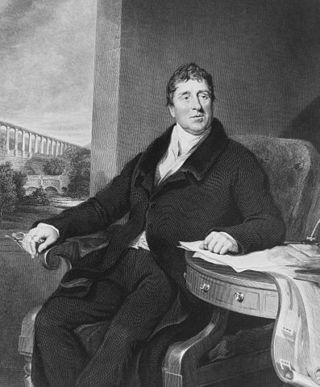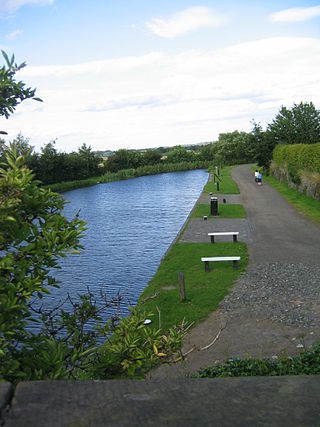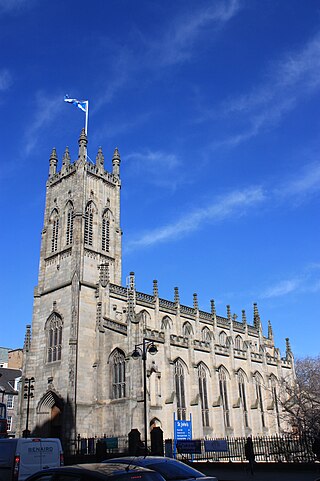Contents
| |||||
| Centuries: | |||||
|---|---|---|---|---|---|
| Decades: | |||||
| See also: | List of years in Scotland Timeline of Scottish history 1822 in: The UK • Wales • Elsewhere | ||||
Events from the year 1822 in Scotland.
| |||||
| Centuries: | |||||
|---|---|---|---|---|---|
| Decades: | |||||
| See also: | List of years in Scotland Timeline of Scottish history 1822 in: The UK • Wales • Elsewhere | ||||
Events from the year 1822 in Scotland.


Thomas Telford was a Scottish civil engineer. After establishing himself as an engineer of road and canal projects in Shropshire, he designed numerous infrastructure projects in his native Scotland, as well as harbours and tunnels. Such was his reputation as a prolific designer of highways and related bridges, he was dubbed the Colossus of Roads, and, reflecting his command of all types of civil engineering in the early 19th century, he was elected as the first president of the Institution of Civil Engineers, a post he held for 14 years until his death.

The Dean Cemetery is a historically important Victorian cemetery north of the Dean Village, west of Edinburgh city centre, in Scotland. It lies between Queensferry Road and the Water of Leith, bounded on its east side by Dean Path and on its west by the Dean Gallery. A 20th-century extension lies detached from the main cemetery to the north of Ravelston Terrace. The main cemetery is accessible through the main gate on its east side, through a "grace and favour" access door from the grounds of Dean Gallery and from Ravelston Terrace. The modern extension is only accessible at the junction of Dean Path and Queensferry Road.
The year 1822 in architecture involved some significant events.

Hugh Pattison Macmillan, Baron Macmillan, was a Scottish advocate, judge, parliamentarian and civil servant.

Hugh Baird was a Scottish civil engineer, who designed and oversaw the building of the Union Canal.

The Church of St John the Evangelist is a Scottish Episcopal church in the centre of Edinburgh, Scotland. It is sited at the west end of Princes Street at its junction with Lothian Road, and is protected as a category A listed building.

Greyfriars Kirkyard is the graveyard surrounding Greyfriars Kirk in Edinburgh, Scotland. It is located at the southern edge of the Old Town, adjacent to George Heriot's School. Burials have been taking place since the late 16th century, and a number of notable Edinburgh residents are interred at Greyfriars. The Kirkyard is operated by City of Edinburgh Council in liaison with a charitable trust, which is linked to but separate from the church. The Kirkyard and its monuments are protected as a category A listed building.

Samuel Joseph was a British sculptor, working in the early 19th century.
The Sheriff of Ayr was historically the royal official responsible for enforcing law and order in Ayr, Scotland and bringing criminals to justice. Sundrum Castle was used by the sheriff from the 14th century, and Loudoun Castle from the 16th century. Prior to 1748 most sheriffdoms were held on a hereditary basis. From that date, following the Jacobite uprising of 1745, the hereditary sheriffs were replaced by salaried sheriff-deputes, qualified advocates who were members of the Scottish Bar.
The Sheriff of Lanark or Sheriff of Lanarkshire was historically the royal official responsible for enforcing law and order and bringing criminals to justice in Lanarkshire, Scotland. Prior to 1748 most sheriffdoms were held on a hereditary basis. From that date, following the Jacobite uprising of 1745, the hereditary sheriffs were replaced by salaried sheriff-deputes, qualified advocates who were members of the Scottish Bar.
Events from the year 1926 in Scotland.
Events from the year 1811 in Scotland.

Cartland Bridge is a road bridge on the A73 north-west of Lanark, South Lanarkshire which spans the Mouse Water, a tributary of the River Clyde. The three-span bridge was built in 1822, to designs by the engineer Thomas Telford. It is notable for being the highest bridge over inland water in Scotland. It is a category B listed building.
Events from the year 1817 in Scotland.
Events from the year 1818 in Scotland.
Events from the year 1819 in Scotland.
Events from the year 1834 in Scotland.
Events from the year 1827 in Scotland.
Events from the year 1820 in Scotland.